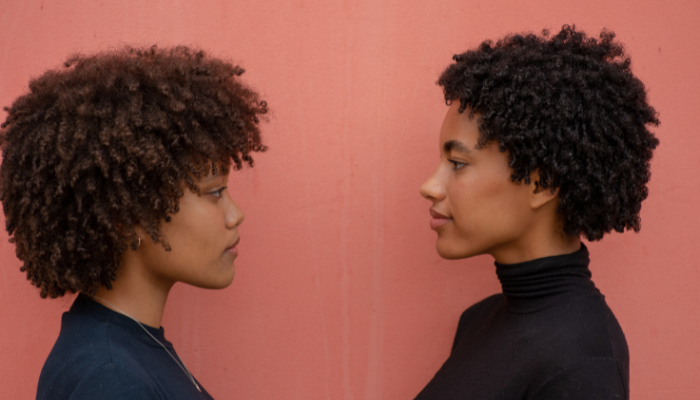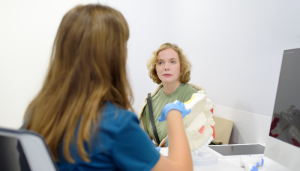Rhinoplasty revision offers a second chance for those who are not satisfied with their initial nose job results. While the first surgery aims to create a desired aesthetic or functional outcome, sometimes things don’t go as planned.
Whether due to aesthetic dissatisfaction, breathing difficulties, or complications, many individuals find themselves considering revision rhinoplasty. This article explores the ins and outs of revision rhinoplasty, from understanding the process to choosing the right surgeon and managing expectations.
Key Takeaways
- Revision rhinoplasty is performed to correct issues from a previous nose job.
- Common reasons for seeking revision include aesthetic dissatisfaction and breathing problems.
- Choosing a skilled surgeon is crucial for successful outcomes in revision rhinoplasty.
- Recovery from revision surgery may take longer due to previous scarring and complexities.
- Managing patient expectations is key to achieving satisfaction with the results.
Understanding Rhinoplasty Revision

What Is Rhinoplasty Revision?
So, you’ve had a nose job, but things didn’t quite go to plan? Don’t worry, you’re not alone. Rhinoplasty revision is basically a second surgery to correct or improve the results of a previous nose job. It’s there to address anything from minor tweaks to major functional or aesthetic issues.
Think of it as a chance to get things right the second time around. It’s more common than you might think, and with the right surgeon, it can make a real difference.
Common Reasons for Seeking Revision
There are loads of reasons why someone might consider revision rhinoplasty. Maybe the initial surgery didn’t quite achieve the desired look – perhaps the nose is still asymmetrical, or there’s a bump that wasn’t fully addressed.
Sometimes, it’s about breathing problems that weren’t fixed or, worse, were made worse by the first operation. Other times, it could be due to complications from healing, like excessive scar tissue.
Here’s a quick rundown:
- Aesthetic dissatisfaction: The nose doesn’t look quite right.
- Breathing difficulties: Problems with airflow persist or arise.
- Complications: Scarring or other unexpected issues.
The Importance of Timing in Revision
The big question is: when can you get a revision? Surgeons usually recommend waiting at least a year after your first surgery before considering another one.
Why? Because it takes that long for all the swelling to go down and for the delicate tissue in your nose to fully heal and settle. Rushing into another procedure too soon could lead to more complications.
Waiting allows the tissues to stabilise, giving the surgeon a clearer picture of what needs to be corrected and improving the chances of a successful outcome. It’s a bit like letting a cake cool before you ice it – you’ll get a much smoother finish.
Challenges of Revision Rhinoplasty
Revision rhinoplasty, while offering a second chance, comes with its own set of hurdles. It’s not quite as straightforward as the initial procedure, and understanding these challenges is key to a successful outcome.
It’s like trying to fix something that’s already been taken apart and put back together – things can get a bit tricky.
Scar Tissue and Its Impact
Scar tissue is a biggie. It’s basically the body’s way of patching things up after surgery, but in the nose, it can cause problems. It can distort the underlying structures, making it harder for the surgeon to see what they’re doing and to achieve the desired results.
Scar tissue can also limit the flexibility of the nasal tissues, which can affect both the appearance and function of the nose.
Managing Patient Expectations
After a first rhinoplasty that didn’t quite hit the mark, it’s natural to have strong feelings about what you want the second time around. But it’s super important to be realistic.
Revision rhinoplasty can definitely improve things, but it might not be able to achieve absolute perfection. It’s all about having an open and honest chat with your surgeon about what’s possible and what’s not.
Complexities of Surgical Techniques
Revision rhinoplasty often requires more advanced surgical techniques than a primary rhinoplasty. This is because the surgeon is working with altered anatomy, scar tissue, and potentially weakened cartilage. Grafting, where cartilage or bone is taken from another part of the body to rebuild the nose, is often necessary.
It’s important to remember that revision rhinoplasty is a journey, not a quick fix. There will be ups and downs, and it’s essential to have a good support system in place. But with the right surgeon and a realistic outlook, a second chance can indeed be the perfect fix.
Choosing the Right Surgeon for Revision

Finding the right surgeon is probably the most important part. You want someone who’s not just good, but great, especially when dealing with the complexities of a second procedure.
Qualifications to Look For
First things first, check their credentials. Are they board-certified surgeon? This is a must. It means they’ve met rigorous standards of training and knowledge. But don’t stop there. Look for surgeons who specialise in rhinoplasty, and even better, those who focus on revision cases. It’s a different ball game compared to a primary rhinoplasty.
You want someone who’s seen it all and knows how to handle the unexpected. Here’s a quick checklist:
- Board certification (ideally in facial plastic surgery or otolaryngology)
- Specialisation in rhinoplasty
- Significant experience with revision cases
Experience with Complex Cases
This is where it gets interesting. Revision rhinoplasty isn’t just about making cosmetic tweaks; it’s often about correcting functional issues, dealing with scar tissue, and rebuilding structures. You need a surgeon who’s comfortable with complexity.
Ask about their experience with difficult cases – noses that have had multiple surgeries, or those with significant structural problems. Look for before-and-after photos that showcase their ability to handle these challenges.
It’s not just about the number of years they’ve been practising, but what they’ve been practising on. A surgeon who’s tackled a wide range of complex revision cases is going to be better prepared to handle whatever your nose throws their way.
Consultation Process and Questions
The consultation is your chance to interview the surgeon. Come prepared with a list of questions. Don’t be afraid to ask about their approach to your specific case, their success rates, and potential risks. A good surgeon will take the time to listen to your concerns, explain the procedure in detail, and provide realistic expectations.
They should also be able to show you computer simulations of the potential outcome. If they seem rushed, dismissive, or unwilling to answer your questions, that’s a red flag. Trust your gut – you need to feel comfortable and confident in their abilities.
Some questions to consider:
- How many revision rhinoplasties have you performed?
- What is your approach to my specific nasal structure and concerns?
- What are the potential risks and complications associated with this procedure?
- Can I see before-and-after photos of patients with similar cases to mine?
What to Expect During the Revision Process
It’s natural to feel a mix of hope and maybe a little anxiety. Let’s break down what you can expect, step by step, to help you feel more prepared and confident.
Pre-Surgery Consultations
You’ll have a series of chats with your surgeon. This isn’t just a quick hello; it’s a proper deep dive. They’ll want to know everything about your previous surgery, what you didn’t like about the results, and what you’re hoping to achieve this time around.
Be prepared to discuss your medical history in detail, and don’t hold back on any concerns or questions you might have. They might use imaging technology to get a better look at the structure of your nose and plan the surgery. It’s all about making sure everyone’s on the same page.
Surgical Techniques Used
Revision rhinoplasty isn’t a one-size-fits-all kind of deal. The techniques used will depend entirely on what needs to be corrected. Sometimes, it’s a minor tweak; other times, it’s a more complex reconstruction.
Your surgeon might need to use cartilage grafts to add support or reshape areas. These grafts can come from your septum (if there’s any left), your ear, or even your rib. The approach can also vary – open or closed – depending on the extent of the work needed. It’s worth asking your surgeon to explain exactly what they plan to do and why.
Recovery Timeline and Aftercare
Expect some swelling and bruising – it’s par for the course. You’ll probably have a splint or cast on your nose for about a week.
Here’s a rough timeline:
- First week: Rest, manage pain with prescribed medication, keep your head elevated.
- Two to four weeks: Swelling starts to subside, you can gradually return to normal activities (avoiding strenuous exercise).
- Several months: Continued subtle changes as the tissues settle. The final result might not be visible for up to a year or even longer.
Following your surgeon’s aftercare instructions is super important. This includes things like cleaning the incision, avoiding certain activities, and attending follow-up appointments. Don’t skip these steps – they’re there to help you heal properly and get the best possible outcome.
Success Stories and Patient Testimonials
The Role of Patient Support
Going through any kind of surgery can be tough, and revision rhinoplasty is no exception. Having a strong support system can make a massive difference. This could be family, friends, or even online communities where people share their experiences. Knowing you’re not alone can be incredibly comforting.
It’s important to remember that everyone’s journey is unique. What worked for one person might not work for another. That’s why it’s so important to find a surgeon who listens to your concerns and develops a treatment plan that’s tailored to your specific needs.
Building Confidence After Revision
One of the biggest benefits of a successful revision rhinoplasty is the boost in confidence it can provide. When you’re happy with your appearance, it can have a ripple effect on other areas of your life.
You might feel more comfortable socialising, more confident at work, and just generally happier in your own skin. It’s not just about aesthetics; it’s about feeling good about yourself.
Here’s a quick look at how revision rhinoplasty can impact confidence levels:
| Aspect | Before Revision | After Revision | Improvement |
|---|---|---|---|
| Self-Esteem | Low | High | Significant |
| Social Interaction | Avoidant | Confident | Noticeable |
| Overall Happiness | Moderate | Very High | Substantial |
Post-Operative Care and Considerations
The surgery is a big step, but what you do afterwards is just as important. It’s all about giving your nose the best chance to heal properly and achieve the results you’re hoping for. Let’s break down what you need to know.
Importance of Following Instructions
Your surgeon’s instructions are your bible during recovery. Seriously, stick to them! They’re tailored to your specific surgery and will help minimise complications. This isn’t the time to be a rebel. It’s easy to think, “Oh, I feel fine, I’ll just do this one thing,” but trust me, it’s not worth the risk.
- Take medications as prescribed. Don’t skip doses or try to tough it out without pain relief if you need it.
- Attend all follow-up appointments. These are crucial for monitoring your progress and catching any potential issues early.
- Avoid strenuous activity. That means no gym, no heavy lifting, and definitely no contact sports for a while.
Listen to your body. If something doesn’t feel right, don’t hesitate to contact your surgeon. It’s always better to be safe than sorry.
Managing Pain and Discomfort
Let’s be honest, there will be some discomfort. It’s surgery, after all! But it’s manageable.
- Pain medication: As mentioned, take it as prescribed. Don’t wait until the pain is unbearable before taking a pill.
- Cold compresses: These are your best friend for reducing swelling and bruising. Apply them gently to the area around your nose and eyes.
- Elevate your head: Sleeping with your head elevated will also help reduce swelling. Use extra pillows or a wedge pillow.
Signs of Complications to Watch For
While most revision rhinoplasties go smoothly, it’s important to be aware of potential complications. Knowing what to look for can help you seek treatment quickly if needed.
- Excessive bleeding: A little bit of oozing is normal, but if you’re soaking through bandages, contact your surgeon immediately.
- Signs of infection: Look out for increased redness, swelling, pain, or pus. A fever is also a sign of infection.
- Difficulty breathing: If you’re having trouble breathing through your nose, it could be a sign of a problem. Don’t ignore it.
| Symptom | Severity | Action |
|---|---|---|
| Mild Swelling | Normal | Cold compress, elevate head |
| Excessive Bleeding | Serious | Contact surgeon immediately |
| High Fever | Serious | Seek immediate medical attention |
| Difficulty Breathing | Serious | Contact surgeon immediately |
Remember, patience is key. Healing takes time, and it’s normal to have good days and bad days. Just keep following your surgeon’s instructions, and you’ll be well on your way to a successful outcome.
Long-Term Outcomes of Rhinoplasty Revision

Expected Results Over Time
What can you realistically expect down the line? Well, it’s not quite a ‘set it and forget it’ situation, but with proper care and a bit of patience, you can anticipate some pretty good results.
The initial swelling will subside over several months, but the final, refined shape of your nose might take up to a year or even two to fully reveal itself. It’s a bit of a waiting game but trust the process. Remember that individual healing rates vary, so don’t compare your progress to others.
Factors Influencing Longevity
Loads of things can affect how long your revision rhinoplasty results last. I mean, we’re talking about your body here, and bodies are complicated! Here’s a quick rundown:
- Surgical Technique: A solid, well-executed procedure is the foundation.
- Cartilage Grafting: If grafts were used, their stability plays a big role.
- Lifestyle Choices: Smoking? Not great. Excessive sun exposure? Also not ideal.
- Natural Ageing: Yep, time marches on, and your nose will change along with the rest of you.
- Trauma: Try to avoid any knocks or bumps to the nose, especially in the early stages.
It’s worth remembering that while revision rhinoplasty can bring about significant and lasting improvements, it doesn’t stop the natural ageing process. Your nose, like the rest of your face, will continue to change subtly over time. Maintaining a healthy lifestyle and protecting your nose from injury can help to prolong the positive results of your surgery.
Maintaining Your New Look
Alright, so you’ve got your new nose, and you’re loving it. How do you keep it looking its best? Here are a few tips:
- Sun Protection: Always wear sunscreen on your nose to prevent skin damage and changes in skin tone.
- Healthy Lifestyle: A balanced diet and regular exercise contribute to overall skin health.
- Avoid Smoking: Smoking can impair blood flow and affect the skin’s elasticity.
- Gentle Skincare: Be gentle when cleansing and moisturising your face.
- Regular Check-ups: Keep in touch with your surgeon for any concerns or questions. They can provide personalised advice and monitor your progress over time.
Basically, treat your nose with kindness, and it’ll likely treat you right back!
Conclusion
Revision rhinoplasty can be a beacon of hope for those who are not satisfied with their initial results. It’s important to remember that while a second chance can lead to improvements, it also comes with its own set of challenges. Choosing the right surgeon is key, as their experience can make a significant difference in the outcome.
If you’re considering this path, take the time to research about types of Rhinoplasty and consult with professionals who understand your needs. With the right approach, revision rhinoplasty can indeed be the perfect fix, helping you achieve the look and functionality you desire.
Frequently Asked Questions
What is revision rhinoplasty?
Revision rhinoplasty is a surgery to fix problems or improve results from a previous nose job. It can help with issues like an uneven nose or breathing difficulties.
Why might someone need a second rhinoplasty?
People may want a second rhinoplasty if they are unhappy with how their nose looks, if they have trouble breathing, or if there were complications from the first surgery.
How long should I wait before having revision rhinoplasty?
Doctors usually suggest waiting at least a year after the first surgery before considering revision. This allows enough time for healing.
What challenges can arise during revision rhinoplasty?
Revision surgeries can be harder because of scar tissue, weaker cartilage, and higher patient expectations based on their first experience.
How do I choose the right surgeon for revision rhinoplasty?
Look for a surgeon who is board-certified and has a lot of experience with revision surgeries. It’s important to have a thorough consultation.
What can I expect during recovery from revision rhinoplasty?
Recovery can take longer than the first surgery. You’ll need to follow your doctor’s instructions carefully to ensure the best results.





